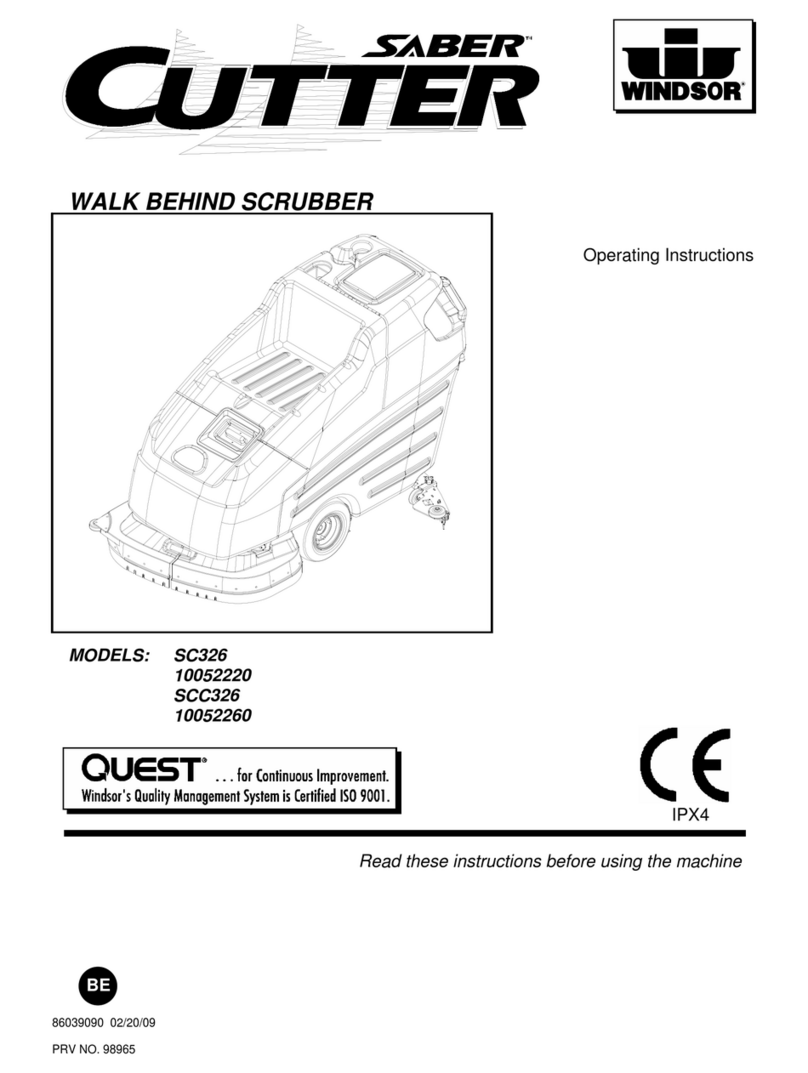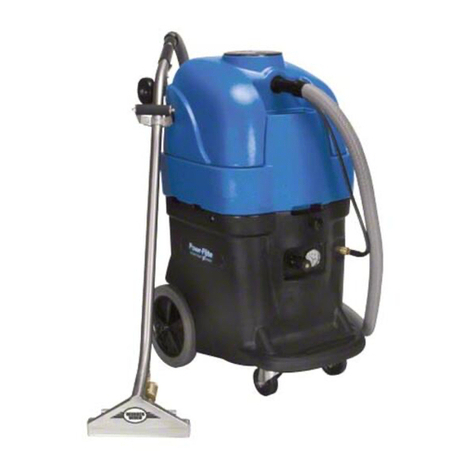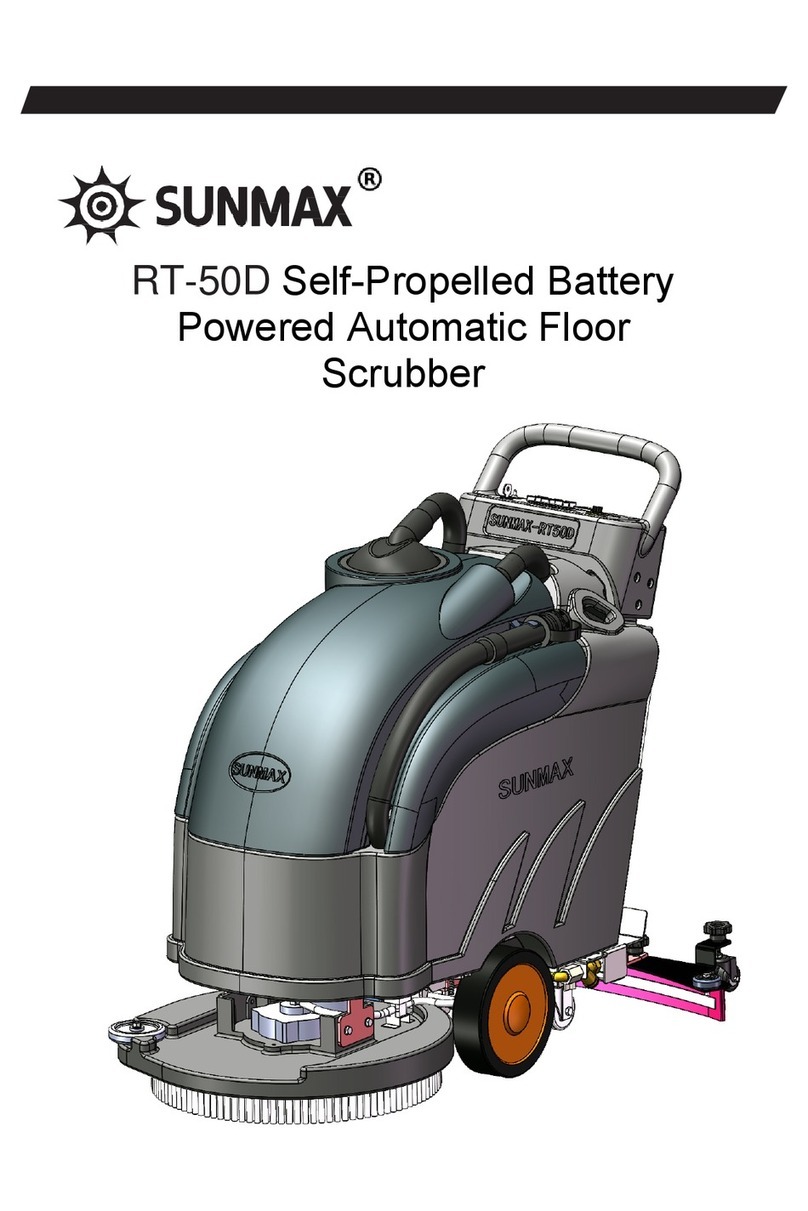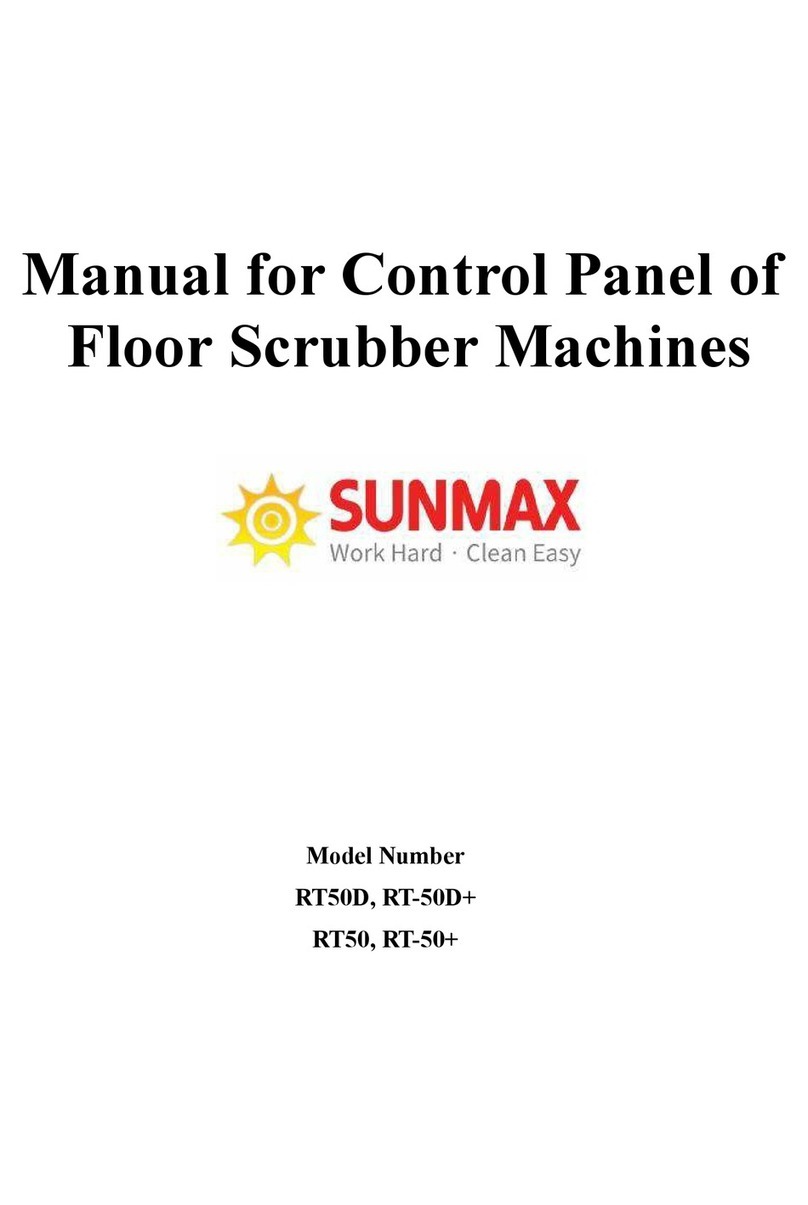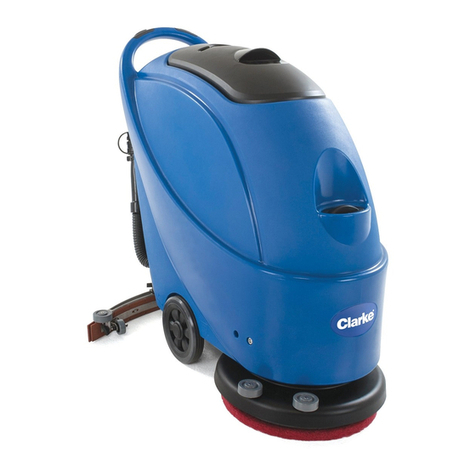Safety Precautions
In order to avoid injury to the operator or damage to the machine, please observe the
following regulations carefully.
Precautions:
Please read the label on the machine carefully. If there is any abnormality, please replace it
immediately.
The machine must be used by authorized and trained personnel. Do not make the inclination
of the machine exceed the allowable angle on the display screen.
This machine is not suitable for cleaning rough or uneven floor. Do not use the machine on
slopes.
If the power cord of the battery charger is damaged, please contact our authorized service
center immediately.
In case of danger, please press panic button on the command panel quickly.
During maintenance, please turn off the machine and disconnect the power cable.
Do not place the machine within the range where children can operate and play.
Please pay attention to the safety of other people around you, especially children, when using
the machine.
Please use the brush provided by this machine or the brush selected in the "Selection and Use
of Brush" in the operation manual. Do not use other brushes to avoid accidents.
Precautions:
This machine is not suitable for children, disabled people, mental patients or people who
lack knowledge and experience.
This machine must not be used outdoors or in a humid environment, and direct exposure to
rain is strictly prohibited.
The storage temperature of this machine is between-25℃ and 55℃. Do not store it outdoors
in humid environment for a long time.
The use conditions are room temperature 0℃-40℃ and relative humidity 30%-90%.
The power cord socket (plug-in version) of this machine or the power cord for battery
charger (rechargeable version) must be floored correctly.
Please operate this machine at an appropriate speed.
Do not use this machine as a means of transportation.
This machine will not produce harmful vibration.
Do not use the machine in flammable and explosive environment.
Do not use this machine to collect flammable liquids.
Do not use this machine to collect dangerous powder.
Do not mix different types of detergents, which may react to produce harmful gases.
This machine is not suitable for cleaning carpets.
Do not put any liquid containers on the machine.
When the machine is stationary, do not use brushes to avoid damage to the floor.
In case of fire, please use powder fire extinguisher and never use water to put out the fire.
Do not knock against the scaffold, and lest it fall. Operators must always be equipped with
corresponding safety measures (including gloves, shoes, helmets, goggles, etc.) during use.
